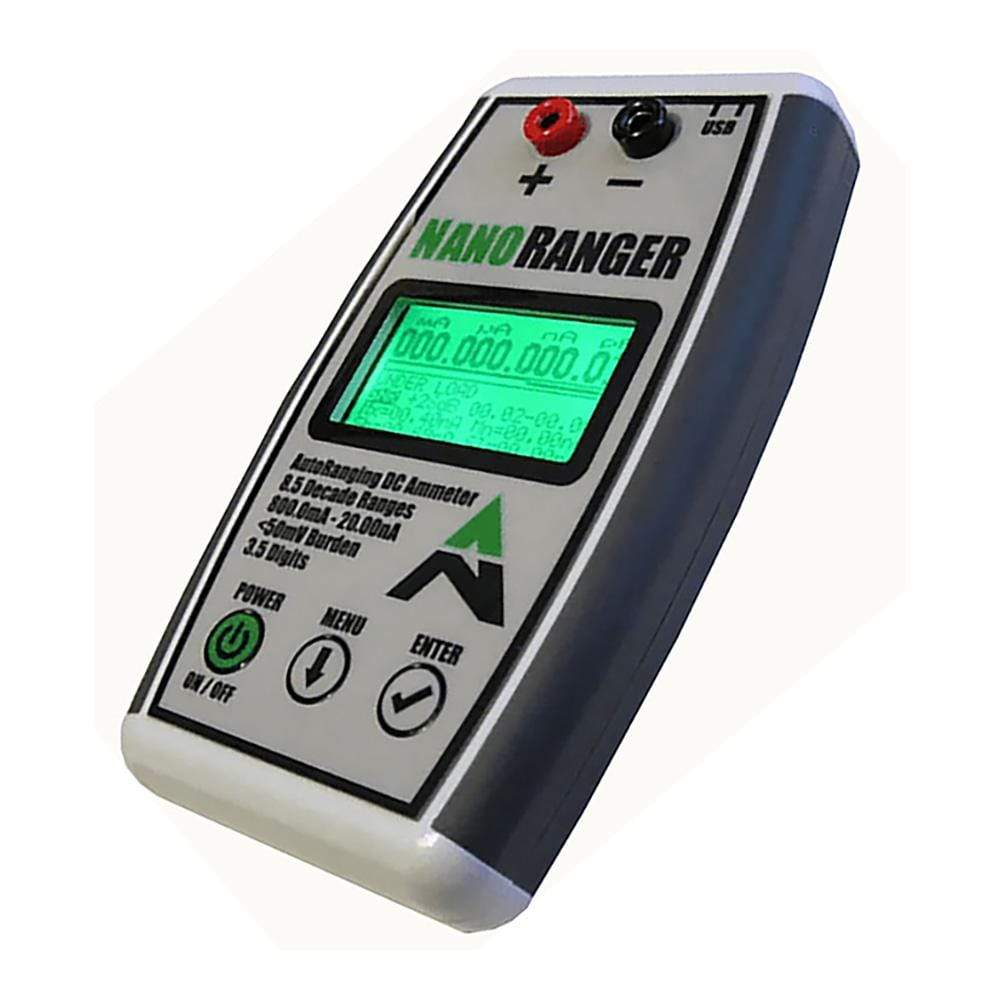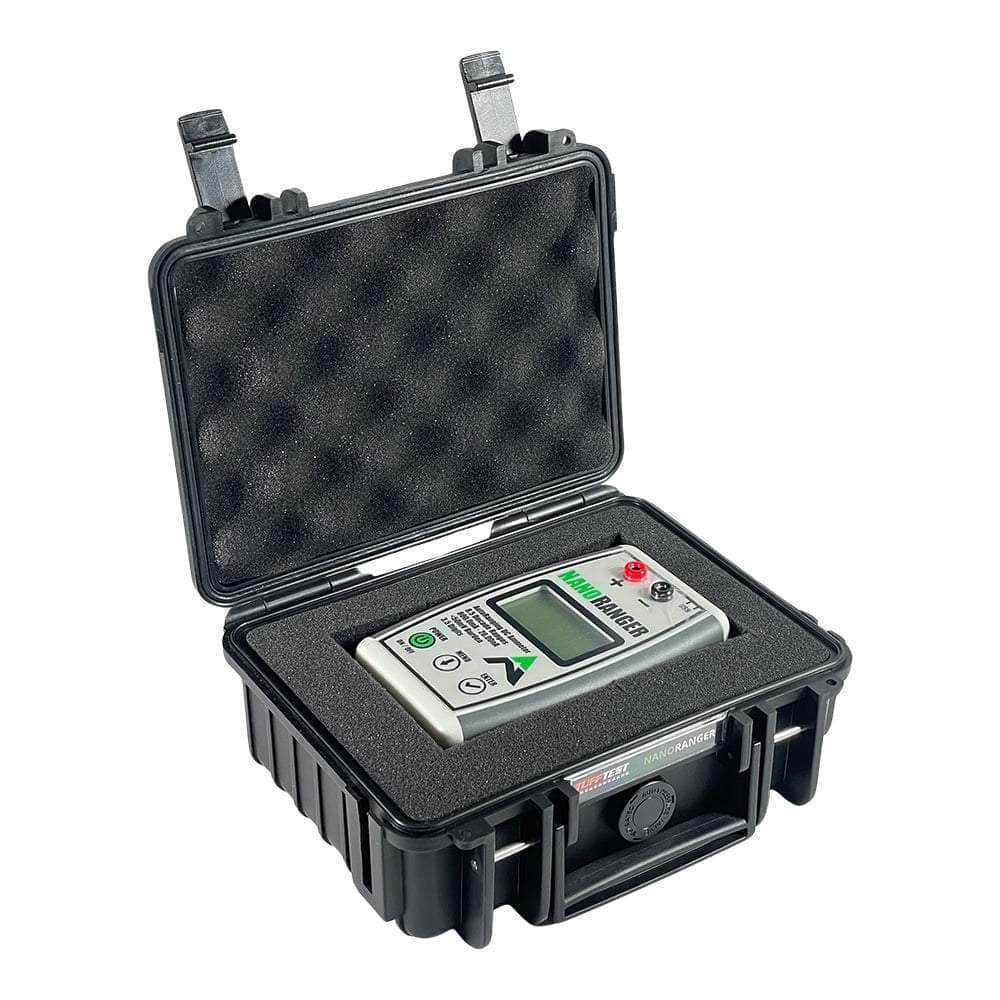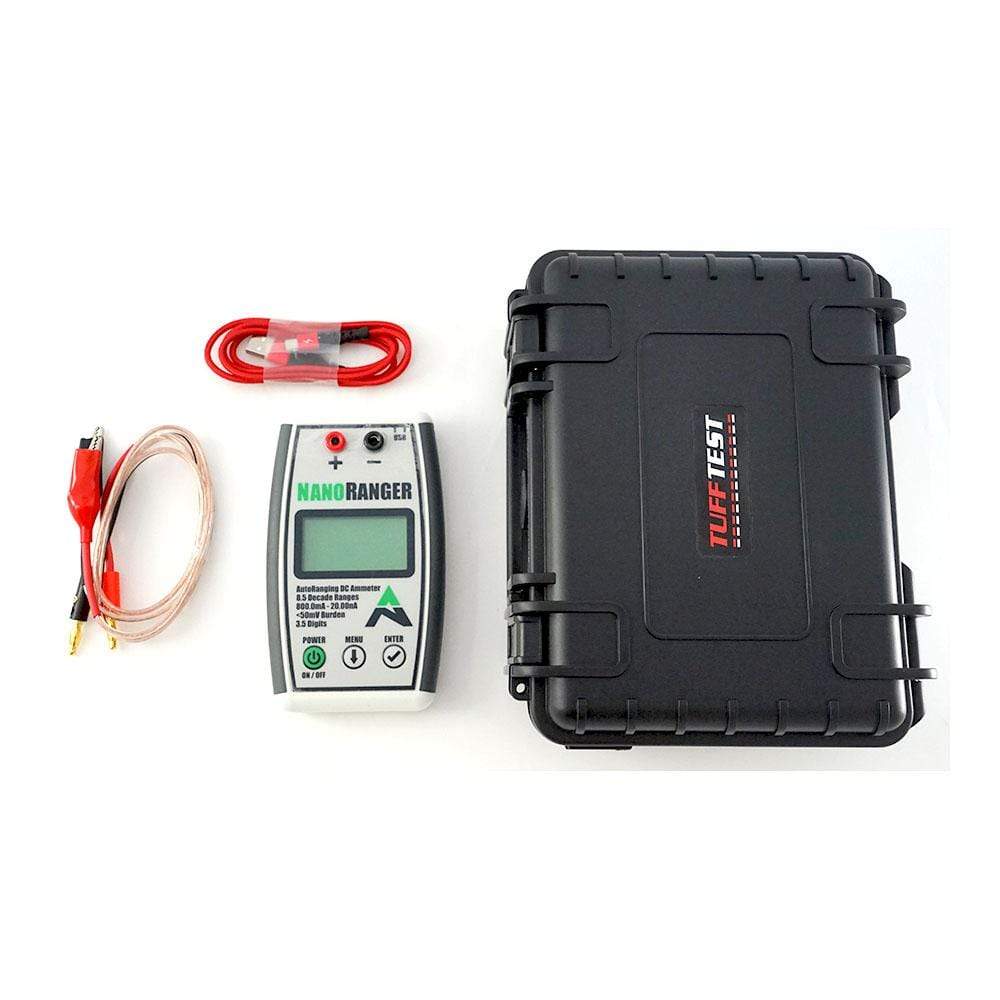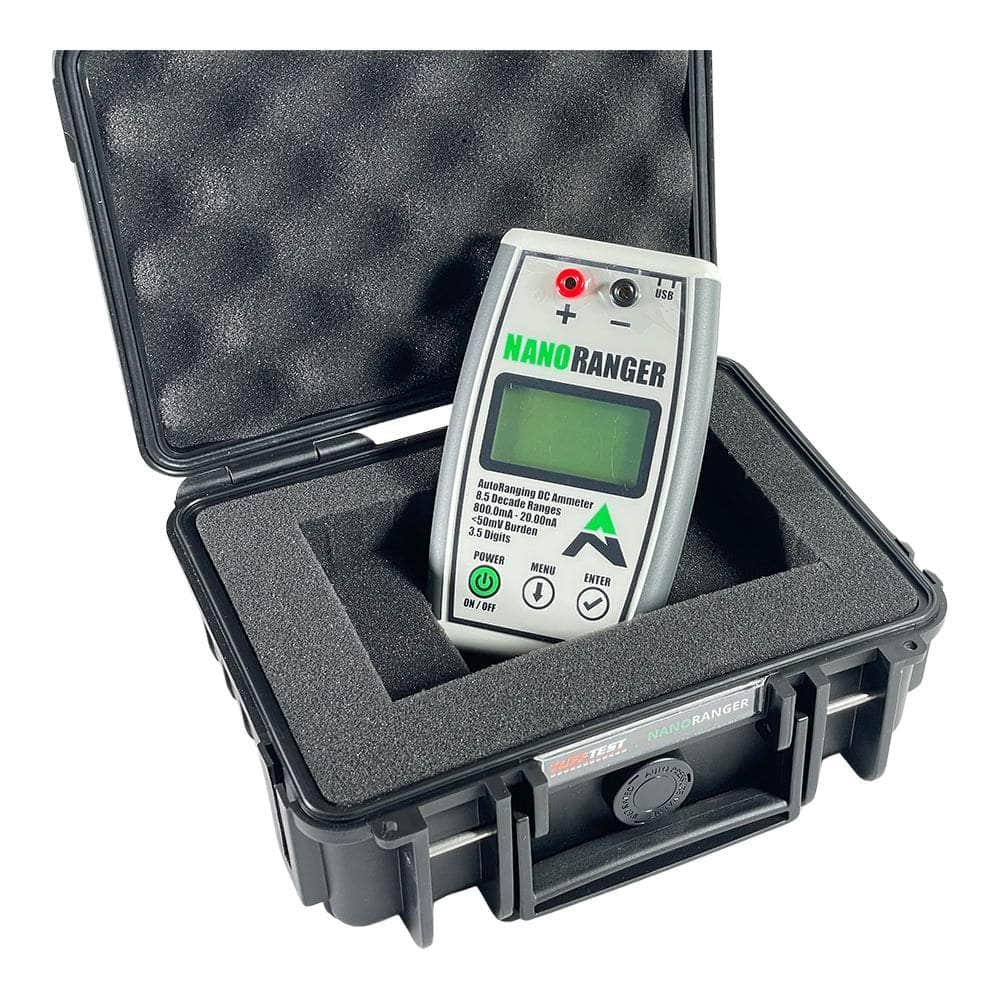
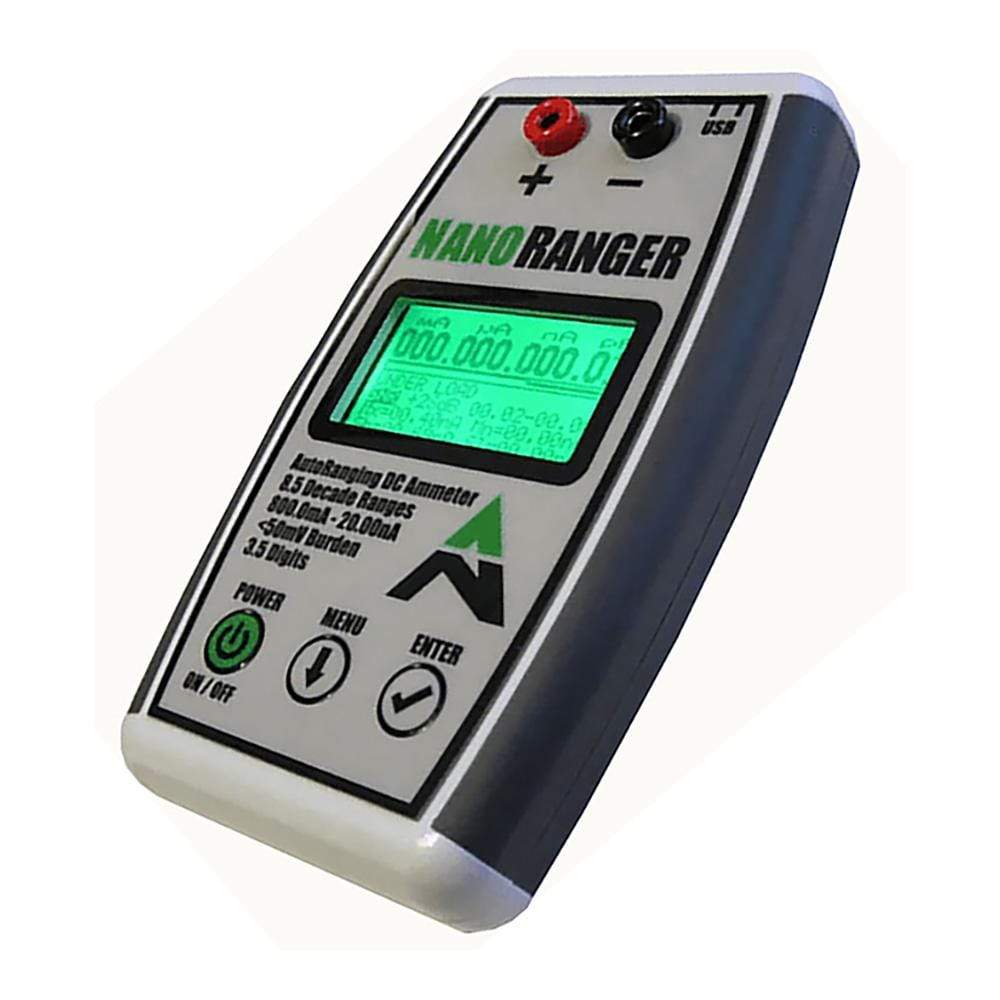
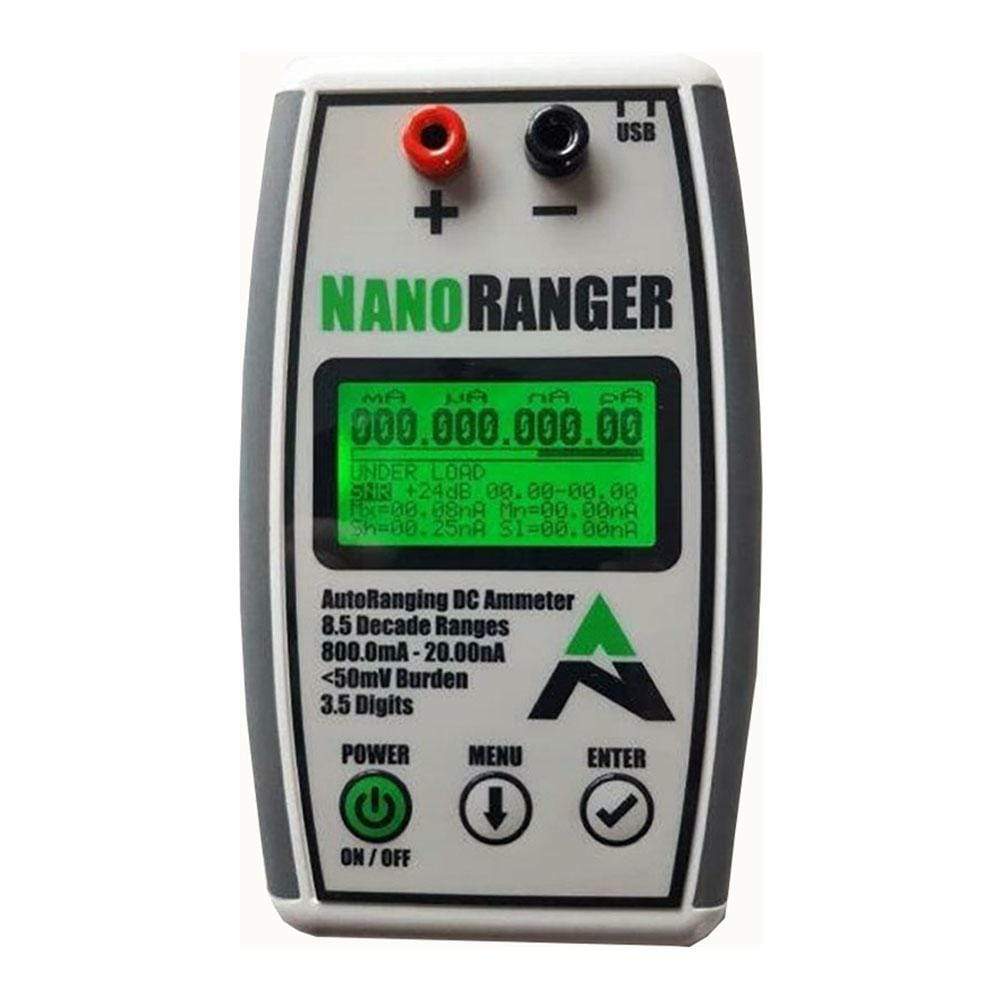
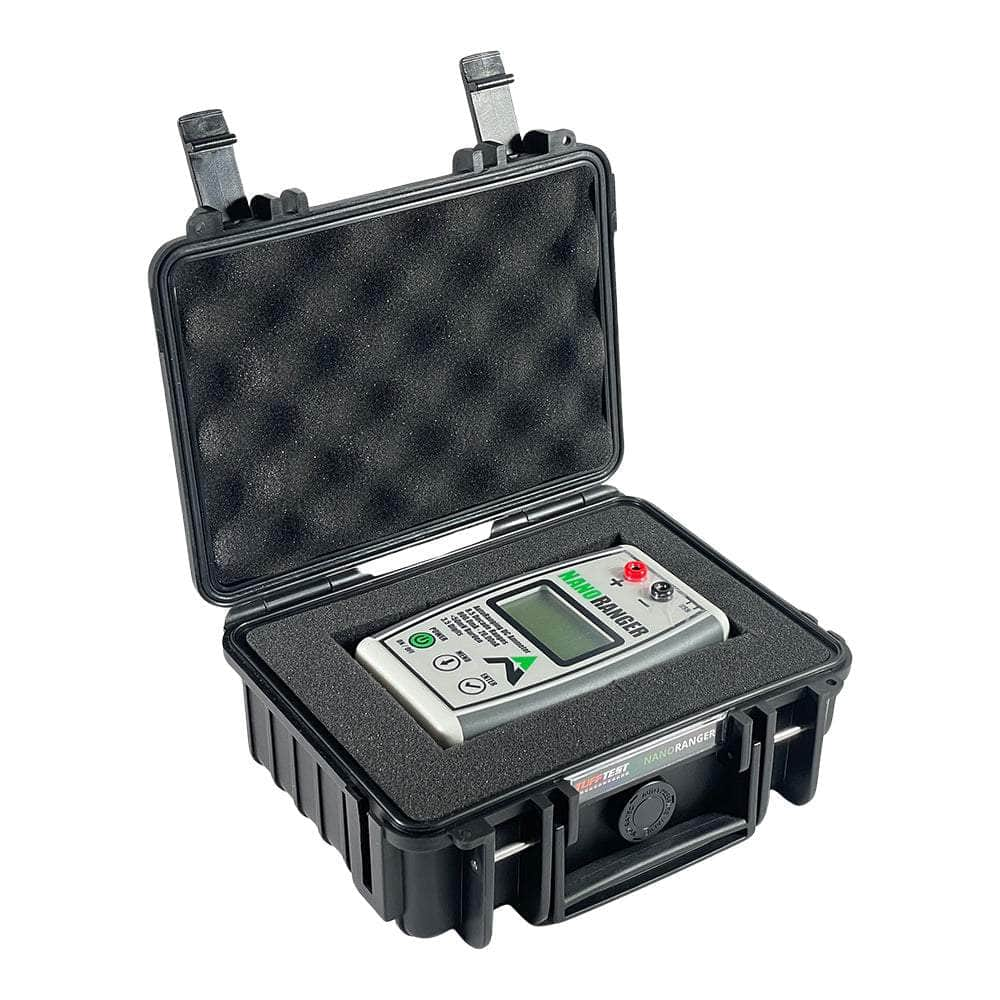
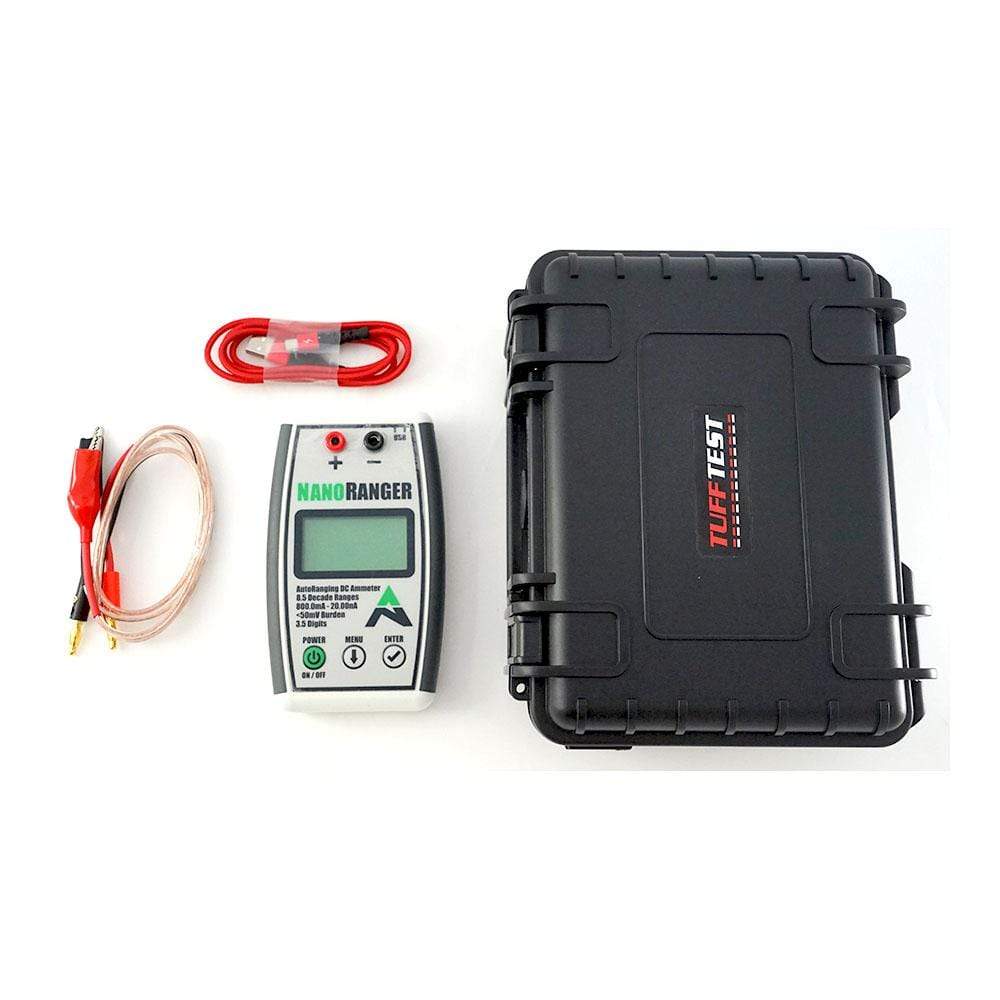
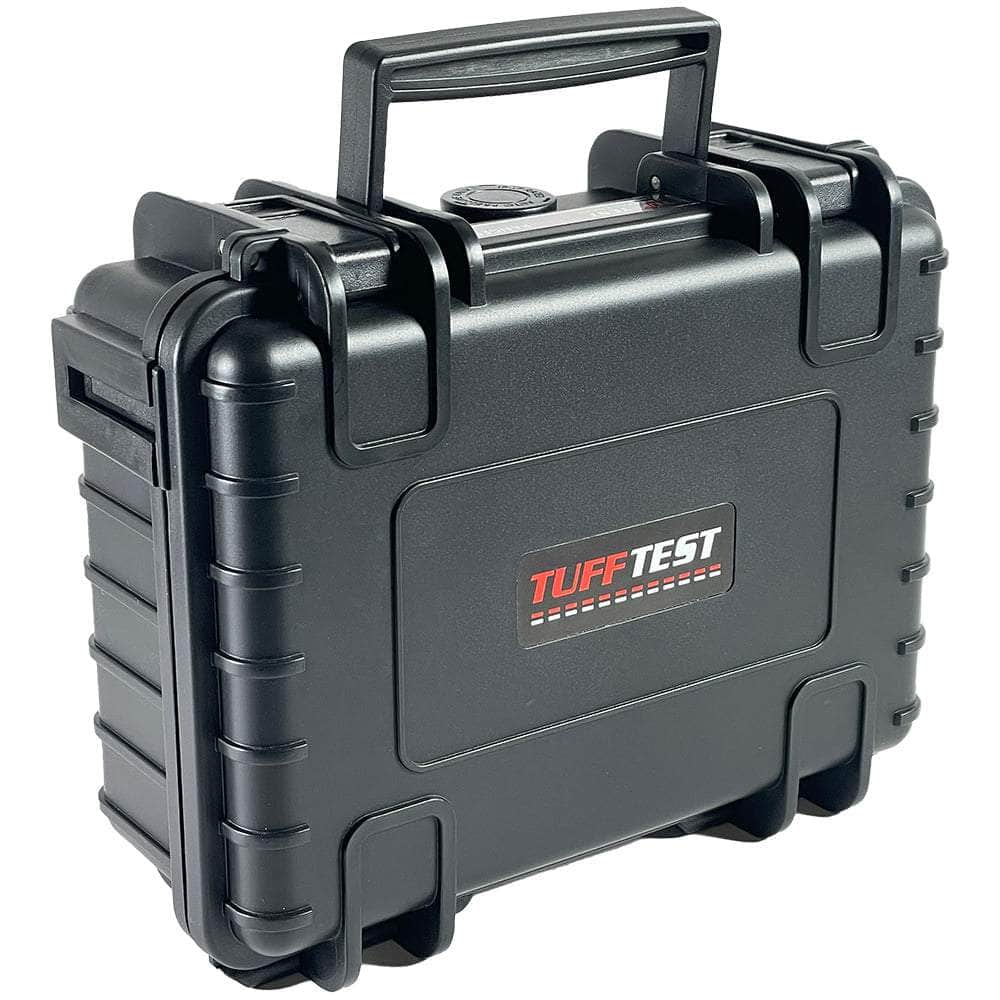
Key Features
Overview
The Altonovus NanoRanger™ NR-01 is a handheld, battery-powered DC nanoammeter for ultra-low current work. It auto-ranges across nine ranges (8.5 decades) to cover 1 nA to 800 mA, with 10 pA resolution on the lowest range. A low burden voltage (<50 mV) helps avoid disturbing sensitive, low-voltage devices.
A 3½-digit LCD presents clear readings with range, signal-to-noise indication and min/max. Readings update approximately every 300 ms using rapid 170 µs sampling with in-instrument averaging. A running average mode reports mean current, elapsed time and accumulated charge (mAh), useful for assessing sleep/active events in IoT designs.
Connectivity & Control
The fully galvanically isolated micro-USB interface supports SCPI command/control and data export without introducing ground loops. NanoRanger runs from two AA cells for extended, mains-noise-free operation.
Variants & Related Tools
Available in a standard unit or as the TuffTest package with rugged carry case, leads and USB cable. For complementary low-voltage resistance work, see the Altonovus ΩhmRanger-LCV™ low compliance voltage ohmmeter.
Related products on Debug Store: NanoRanger™ NR-01, ΩhmRanger-LCV™, Test Meters.
Downloads
Why Engineers Choose The Altonovus NanoRanger™ NR-01 Auto-Ranging Nanoammeter
Handheld Precision Without Bench Overhead
Isolated, Automatable Workflow
Actionable Energy Insight
NanoRanger is an accurate, affordable, auto-ranging DC nanoammeter for the measurement of very low currents.
As we strive for greater efficiency from new and existing products, the measurement of device current consumption is becoming more critical.
Previous solutions to this challenge ranged from very expensive ammeters (thousands of pounds), to cheaper solutions that only have limited manual ranges.
The NanoRanger nanoammeter is a solution to these challenges, as it provides a 3.5-digit, 9 range ammeter that can switch over 8.5 decades (from 1nA to 800mA), with resolution as low as 10pA. It features:
- A 128 x 64mm LCD display, giving a wealth of information about the User's current readings.
- The large 11-digit display shows the User mA, uA, nA, pA, all on one line.
- A SNR display shows how much noise, or AC, is present on the current signal.
- A range bar shows which range the User is in, plus the minimum / maximum range settings.
- Minimum and maximum ranges can be adjusted to limit the auto-ranging, or just to fix it at 1 range.
- An automatic Power Off timer, and configurable LED backlight, enables the User to maximise battery life.
Readings are completed approximately every 300mS, with samples collected every 170uS and averaged out over 200mS to remove most of the mains noise associated with circuits (50Hz and 60Hz).
An averaging mode allows the User to run the sampling for however long the User chooses. When finished, it reports the average current, time, and total charge in mAH or smaller. This enables the User to use it to measure the charge of specific events; e.g. a device coming out of Standby to make a radio transmission.
Data Logging
If current measurements need to be logged over time then using the NanoRanger with Data Logging software is suggested. The RealTerm Software has been tested with the NanoRanger. It uploads data to a host PC for display, which can then be saved in a file for subsequent data processing.
PC Interface
Data captured by the instrument can be uploaded to a host PC by the use of commands in SCPI format. The Nanoranger is fitted with a galvanically isolated USB interface. This is important as it helps prevent electrical noise from the host PC from being conducted to the Device Under Test (DUT).
Power
The NanoRanger Is powered by two AA alkaline cells. Although the instrument has a USB connection, the USB data signals are isolated from the NanoRanger circuitry and the USB interface is unable to power the instrument. It is also important for the instrument to be separated from any mains-borne interference, due to the very-low currents being measured. Powering the instrument with batteries solves this problem.
Due to the low power consumption of the NanoRanger, it is capable of over 150 hours of continuous use with one set of new batteries.
Note: The USB leads and test leads are only included as part of the TuffTest package. Batteries are included with the TuffTest package.
TuffTest
A professional version of the NanoRanger is also available. The NanoRanger is a sensitive piece of kit and needs to be looked after carefully. The TuffTest version of the NanoRanger is fitted into a rugged, waterproof case and protected by a foam insert to keep it safe from damage whilst being transported or stored.
The Tufftest version also includes a set of test leads and a USB cable for connecting to a PC, and two - AA size Alkaline cells so the instrument can be used straight out of the box
| General Information | |
|---|---|
Part Number (SKU) |
TT-NR-01
|
Manufacturer |
|
| Physical and Mechanical | |
Weight |
1.5 kg
|
| Other | |
Warranty |
|
HS Code Customs Tariff code
|
|
EAN |
5055383621071
|
Frequently Asked Questions
Have a Question?
-
Which companion tool pairs well for resistance on delicate parts?
Use the Altonovus ΩhmRanger-LCV™ low compliance voltage ohmmeter for measuring sensitive components safely at sub-400 mV stimulus.
-
What power does the instrument require?
Two AA cells. Battery operation keeps the instrument isolated from mains and supports more than 150 hours typical use.
-
Is NanoRanger suitable for IoT sleep-mode measurements?
Yes. Its 10 pA resolution, low burden, averaging and charge accumulation are designed for low-power embedded and energy-harvesting use-cases.
-
How does this compare with high-end bench picoammeters/electrometers?
Bench instruments like Keysight B2981B or Keithley 6485 offer femtoamp resolution and advanced guarding but are larger and costlier. NanoRanger prioritises handheld convenience, isolated USB and a wider upper-range to 800 mA.
-
Does it calculate average current or charge automatically?
Yes. A running average mode reports mean current, elapsed time and accumulated charge (mAh) for event-based energy analysis.
-
How fast does it update readings?
Typical updates are ~300 ms. Internally it samples at ~170 µs and averages to reject mains-frequency noise.
-
Can I automate measurements and log data?
Yes. NanoRanger supports SCPI commands over USB for scripted control and data export to your PC.
-
Is the USB interface safe to use while measuring tiny currents?
Yes. The micro-USB interface is galvanically isolated, avoiding ground loops and host-computer noise coupling into the DUT.
-
How does low burden voltage help my measurements?
A <50 mV burden reduces the voltage drop across the meter, minimising disturbance to sensitive, low-voltage DUTs during low-current measurements.
-
What current range does NanoRanger measure?
It auto-ranges across nine ranges from 1 nA up to 800 mA with 10 pA resolution at the lowest range.


